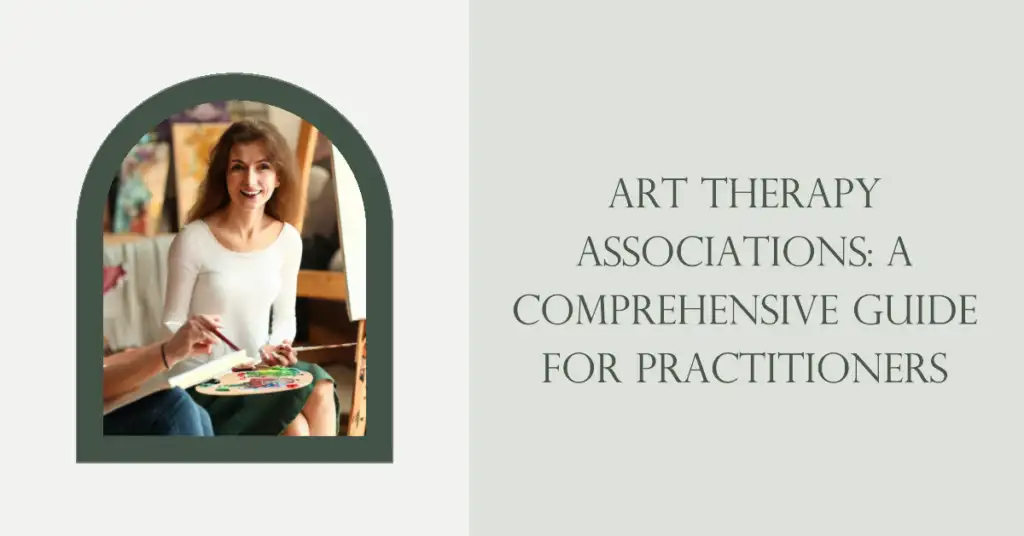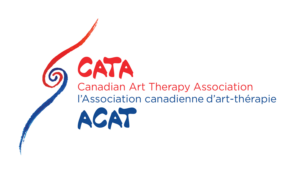Art Therapy Associations: A Comprehensive Guide for Practitioners

As an art therapy practitioner or someone looking to enter the field, understanding the importance of art therapy associations is crucial. These professional organizations not only serve as valuable resources for industry news, networking opportunities, and professional development, but they also help to uphold the standards and ethics of the profession. In this article, we will discuss the benefits of joining art therapy associations and how they contribute to the success of art therapy practitioners.
At Scholistico, we offer an art therapy practitioner training course that is accredited by IPHM, CMA, and CPD. We understand the significance of art therapy associations in promoting and maintaining a high level of professionalism in the industry.
Why Art Therapy Associations Matter
1. Advocacy and Public Awareness
Art therapy associations, such as the American Art Therapy Association (AATA), actively advocate for the profession by raising public awareness about the benefits and effectiveness of art therapy. They work with policymakers, healthcare organizations, and educational institutions to promote the integration of art therapy into various settings, such as schools, hospitals, and community centers.
2. Professional Development
Art therapy associations offer a range of professional development opportunities, including conferences, workshops, webinars, and online courses. These events allow practitioners to stay up-to-date with the latest research, techniques, and best practices in the field, ultimately enhancing their skills and expertise.
3. Networking and Collaboration
Joining an art therapy association provides opportunities to connect with other professionals in the field. Networking events, such as conferences and local chapter meetings, offer practitioners the chance to collaborate, share knowledge, and build supportive relationships with their peers.
4. Ethics and Standards
Art therapy associations play a crucial role in maintaining the professional and ethical standards of the field. They develop and enforce a code of ethics that guides practitioners in their work, ensuring that clients receive the highest quality of care.
5. Access to Resources
Members of art therapy associations gain access to a wealth of resources, including research articles, industry news, job listings, and more. These resources can help practitioners stay informed, grow their practice, and ultimately provide better services to their clients.
The Role of Art Therapy Associations in Professional Development
Art therapy associations play a crucial role in the professional development of art therapists and therapeutic art facilitators. By joining an association, you can access resources, workshops, and conferences to help you stay informed about the latest research, best practices, and industry trends. This continuous learning will enable you to offer the best possible services to your clients and contribute to the advancement of the art therapy field.
Building a Professional Network Through Art Therapy Associations
A strong professional network is essential for art therapists and therapeutic art facilitators. By connecting with like-minded professionals, you can exchange ideas, learn from others’ experiences, and even find new opportunities for collaboration or referrals. Art therapy associations offer various networking opportunities, such as online forums, local chapter meetings, and annual conferences. Engaging in these events can help you expand your network and foster meaningful professional relationships.
Advocacy and Public Awareness
Art therapy associations also work to raise public awareness about the benefits of art therapy and advocate for the profession. By joining an association, you contribute to these efforts and help promote the value of art therapy in society. Associations often engage in activities such as lobbying for favorable legislation, creating public awareness campaigns, and establishing partnerships with other organizations to increase the visibility and credibility of art therapy.
How to Choose the Right Art Therapy Association
When selecting an art therapy association to join, consider the following factors:
- Location: Look for an association that represents practitioners in your country or region. This will ensure that the organization is familiar with the specific regulations, policies, and issues affecting your practice.
- Membership Benefits: Compare the benefits offered by different associations, such as professional development opportunities, networking events, and access to resources.
- Accreditation: Ensure that the association is recognized by relevant accrediting bodies. This will ensure that your membership is acknowledged and respected within the industry.
International Art Therapy Associations
There are several international art therapy associations that practitioners can consider joining. Here are a few examples:
British Association of Art Therapists (BAAT)
The British Association of Art Therapists (BAAT) is the professional organization for art therapists in the United Kingdom. BAAT promotes the use of art therapy and supports its members by offering professional development opportunities, conferences, and workshops. The association also provides a platform for networking among art therapy professionals and works to raise public awareness about the benefits of art therapy. Members can access an extensive library of art therapy resources and publications. For more information, visit the BAAT website.
Canadian Art Therapy Association (CATA)
The Canadian Art Therapy Association (CATA) is a national organization that represents art therapists and advocates for the growth and development of the art therapy profession in Canada. CATA provides its members with opportunities for professional development, networking, and access to resources such as research articles and publications. The association also supports public awareness and understanding of art therapy through various initiatives. To learn more about CATA, visit their official website.
Australian, New Zealand, and Asian Creative Arts Therapies Association (ANZACATA)
The Australian, New Zealand, and Asian Creative Arts Therapies Association (ANZACATA) is a professional organization that represents creative arts therapists, including art therapists, in Australia, New Zealand, and Asia. ANZACATA supports its members by offering professional development opportunities, conferences, workshops, and networking events. The association also works to promote the benefits of creative arts therapies and advocate for the profession. For more information about ANZACATA, visit their website.
European Federation of Art Therapy (EFAT)
The European Federation of Art Therapy (EFAT) is an umbrella organization representing national art therapy associations and individual art therapists across Europe. EFAT’s mission is to promote the use of art therapy, support professional development, and facilitate networking among art therapists in Europe. The federation also aims to raise public awareness about art therapy and advocate for the profession. To learn more about EFAT and its member associations, visit their official website.
American Art Therapy Association (AATA)
The American Art Therapy Association (AATA) is a professional organization representing art therapists in the United States. AATA supports its members by offering opportunities for professional development, networking, and access to resources such as research articles and publications. The association also works to promote the benefits of art therapy and advocate for the profession on a national level. To learn more about AATA, visit their website.
Other Art Therapy Associations
There are numerous art therapy associations worldwide that cater to the needs of art therapists in their respective countries or regions. Some of these organizations include:
- Asociación Argentina de Arteterapia (Argentina Art Therapy Association) – Website
- Associação Brasileira de Arteterapia (Brazilian Art Therapy Association) – Website
- Association des Art-Thérapeutes du Québec (Quebec Art Therapy Association) – Website
- Art Therapy Italiana (Italian Art Therapy Association) – Website
- Norsk Forening for Kunstterapeuter (Norwegian Art Therapy Association) – Website
To find an art therapy association in your country or region, you can search online or reach out to other art therapists in your area for recommendations.
Factors to Consider When Choosing an Art Therapy Association
To help you choose the right art therapy association for your needs, we’ve summarized the main factors to consider in the following table:
| Factor | Description |
|---|---|
| Location | Choose an association that represents practitioners in your country or region, as they will be more familiar with the specific regulations, policies, and issues affecting your practice. |
| Membership Benefits | Compare the benefits offered by different associations, such as professional development opportunities, networking events, and access to resources. |
| Accreditation | Ensure that the association is recognized by relevant accrediting bodies. This will ensure that your membership is acknowledged and respected within the industry. |
| Focus and Specialization | Some associations may have a specific focus or specialization, such as art therapy for children, seniors, or trauma survivors. Consider your own practice and the populations you serve when choosing an association. |
| Networking Opportunities | Consider the networking opportunities offered by the association, such as conferences, local chapter meetings, and online forums. Networking can help you build relationships with other professionals, share knowledge, and gain support. |
| Cost | Evaluate the cost of membership and any additional fees for events or resources. Choose an association that fits your budget while offering the benefits and resources you value most. |
By considering these factors and exploring the various international art therapy associations available, you can find the organization that best aligns with your professional goals, interests, and needs.
Evaluating the Success of Your Association Membership
To ensure that you are making the most of your art therapy association membership, it’s essential to periodically evaluate its benefits and impact on your professional growth. Consider the following questions:
- Are you taking advantage of the professional development opportunities offered by the association?
- Have you built meaningful connections with other members?
- Are you staying up-to-date with the latest research and best practices in the field?
- Is your association membership contributing positively to your professional growth and business success?
| Evaluation Aspect | Questions to Consider |
|---|---|
| Professional Development | Are you actively participating in workshops, conferences, or webinars offered by the association? |
| Networking | Have you established connections with other professionals through association events or online forums? |
| Knowledge and Research | Are you staying informed about the latest research, best practices, and industry trends? |
| Business Success | Has your association membership contributed to the growth and success of your art therapy practice or business? |
By reflecting on these questions and considering the various aspects of your association membership, you can determine if it’s meeting your expectations and supporting your professional growth. If necessary, you can explore other associations that might better align with your needs and goals.
Conclusion
Art therapy associations play a vital role in promoting and upholding the standards and ethics of the art therapy profession. By joining an association, practitioners can access valuable resources, networking opportunities, and professional development events that will enhance their skills and expertise. At Scholistico, we understand the significance of art therapy associations and encourage practitioners to explore these organizations as a way to advance their careers and better serve their clients.














Responses